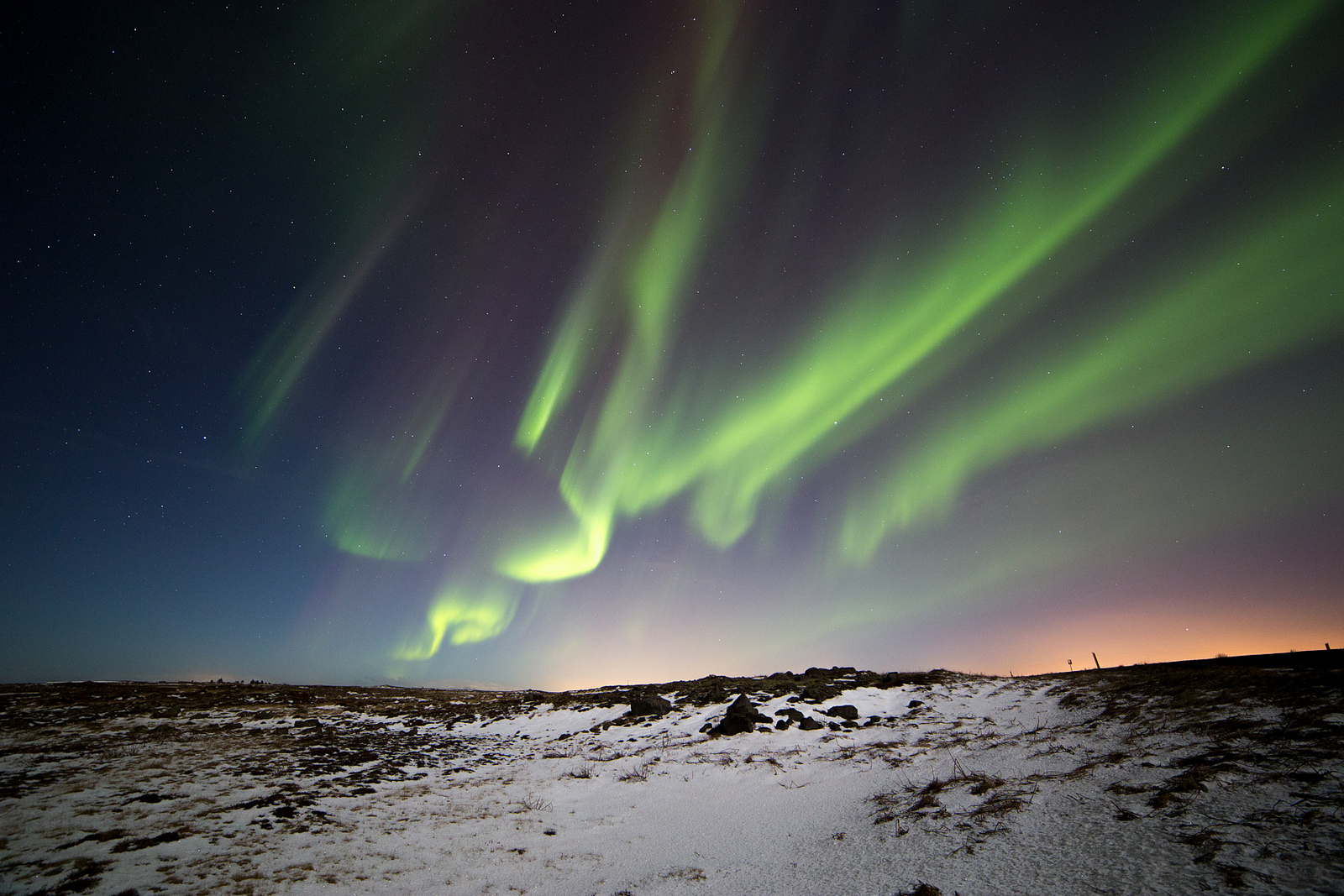
The Northern Lights are pictured here over Iceland. Photo credit: David Phan. CC BY 2.0.
New research from UAlberta physicists shows the mechanism thought to be the cause of certain types of Norhtern Lights, or Aurora Borealis, is invalid. According to a model developed by research associate Dmytro Sydorenko and physics professor Robert Rankin, the mechanism, called the ionospheric feedback instability (IFI), not only fails to cause-it may not exist at all.
"These findings fly in the face of what is now commonly accepted in the world of space science," said Rankin. "Our research findings show that conditions necessary for the ionospheric feedback instability to occur are very unlikely, meaning it cannot be the cause of something as regular as the Aurora Borealis."
Even greater mystery
"These findings fly in the face of what is now commonly accepted in the world of space science." -Robert Rankin
The Sydorenko and Rankin model maps the activity of Alfvén waves generated in Earth's ionosphere-between100 to 1000 kilometres altitude into the magnetosphere, the region containing plasma and Earth's geomagnetic field. Here, ultralow frequency plasma waves are thought to become trapped and amplified through the IFI. But the new model shows that the waves do not interact with the ionosphere in a uniform way- something researchers have long considered to have a causal link to the Aurora Borealis.
The research has implications for many areas of investigation, ranging from theoretical physics to our understanding of space weather and the solar wind.
"A good theory has few assumptions," said Rankin. "This model strengthens our understanding of how Earth's ionosphere to geomagnetic activity and is accessible and useful for any interested researchers."
The paper was published in Geophysical Research Letters. This research was supported by the Canadian Space Agency and Natural Sciences and Engineering Research Council of Canada (NSERC).